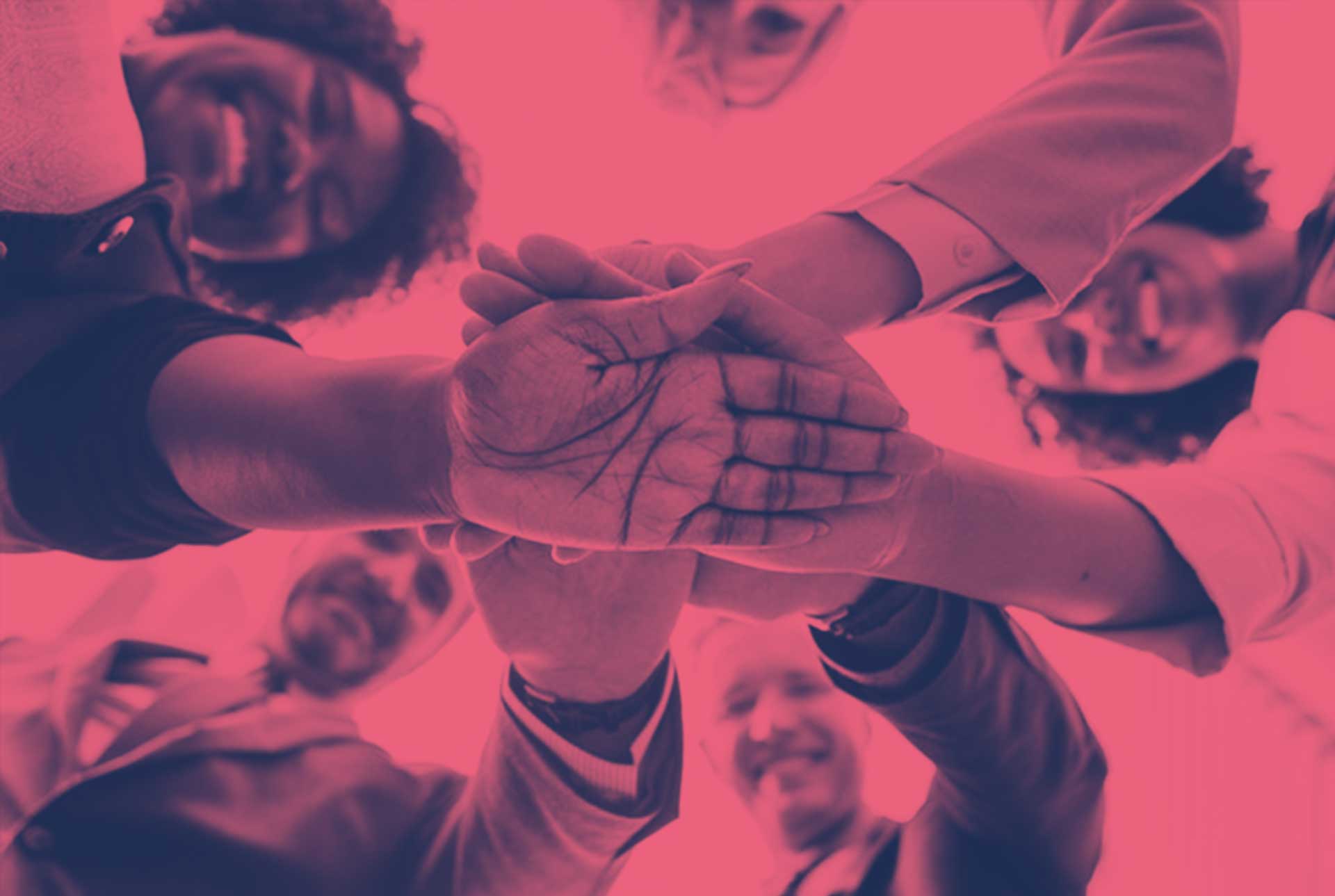Strategy / Perspectives: Hayley Barnard, Co-Founder of MIX Diversity Developers

Leanne Kelly
March 10, 2020
There’s been an increase in research showing a strong business case for diversity and inclusion. We’ve seen changes in legislation such as Gender Pay Gap Reporting and same-sex marriage. Cultural norms are shifting. As a result, Unconscious Bias and Diversity and Inclusion are now considered pressing items on the boardroom agenda.
Whilst most leaders aim to be fair and inclusive, many struggle to understand what they need to do on a practical level to ensure this is the case for all employees and potential employees.
I caught up with Hayley Barnard, a thought leader in Diversity, Inclusion and Unconscious Bias in the workplace. She delivers board-level briefings and strategic consultancy to many FTSE100 and Fortune500 companies as part of her role as MD at MIX Diversity Developers. Here are Hayley’s thoughts on the challenges and opportunities Diversity and Inclusion and Unconscious Bias presents for leaders.

What is Unconscious Bias?
Bias is a positive or negative belief about a particular person or category of people. It usually has negative connotations and is considered to be unfair. Unconscious bias is bias that we’re simply not aware of and often happens outside of our control.
Can you give me an example of Unconscious Bias?
I recently spoke at a conference with about 500 people in the room. I asked the audience to picture a secretary and to put up their hand if their secretary was male. In a room of 500 people, just 1 person put their hand up.
I then repeated the exercise. I asked the audience to imagine a barrister and to put their hand up if their barrister was black. Not one person put their hand up.
That’s a great example of Unconscious Bias. It’s incredibly common for people to unknowingly discriminate or stereotype.
Why is Unconscious Bias an issue in the workplace?
Unconscious Bias often leads to poor decision-making. It can affect how we relate to both our colleagues and our customers.
There are quite a few types of bias. I'll run through the most common ones I see with some examples.
The one I see most frequently is what we call affinity bias. It’s when we unconsciously prefer people with whom we share qualities.
At a presentation I made to a board of directors, the conversation switched to a recent sales director who had recently joined the organisation. Things hadn’t worked out for him quite as well as they’d hoped. Now, it was a tongue in cheek comment, but one of the directors said ‘’maybe we should try recruiting someone who isn’t into triathlon next time’’. Without even thinking about it, we feel safer and therefore tend to prefer people who are more similar to us.
Another common type of unconscious bias is appearance bias. That’s when we unconsciously notice a person’s appearance and automatically associate it with a set of personality traits or skills. We know that within a tenth of a second of meeting someone, we form an opinion on them. The result is that we then make decisions and judgements about them. Research shows our perceptions don’t change a lot over time, so appearance bias can be really significant.
People with tattoos commonly experience appearance bias. Often when people with tattoos are looking to move into more senior management positions, they’re judged, even though their tattoos have absolutely no impact on their ability to do their job.
Finally, ingroup and outgroup bias is also really common in businesses. We prefer people who are in ‘our group’. We tend to focus on their positive traits and ignore the negative ones. For those in our ‘out group’, we’re often so much more critical of them. We focus on their negative traits and find it more difficult to see their positive traits.
What’s the result of ingroup and outgroup bias?
It’s one of the main reasons we see silos in businesses. When ingroup and outgroup bias takes hold, you end up with a lack of collaboration across the business. It’s becoming more and more common.
What can we do to tackle it?
Organisations need to ask the question ‘’how inclusive are our behaviours?’’. We need to look at how we break down biases and help each other to work more collaboratively. Ultimately it all feeds into diversity and inclusion. Unconscious Bias prevents organisations from creating a truly diverse and inclusive workplace.
I think the key for organisations who have been focusing on diversity is to shift the focus to inclusion. Businesses should look to upskill and future proof the people skills of their managers. We need to develop inclusive leadership skills. We need leaders who will attract, inspire and positively influence people of all genders, ages, cultures, abilities and lifestyles to collaborate together.
How can you test for unconscious bias?
It’s difficult, but there are techniques we can use to help us spot it in ourselves and in others in our team. We can also test to check for unconscious biases built into our company processes.
For individuals, we often teach a tool called ‘spin it to test it’ or ‘substitution technique’. The idea is that if you’re faced with a person or a scenario, you spin it to a different person, someone of a different colour or age for example. You then ask yourself ‘’does this still seem fair?’’.
Let’s use the example of a pile of CVs. If you take a look at your pile of candidates to reject and you substitute the names on their CVs for an Anglo-Saxon name or a native sounding name, or if you were to change their gender, would you still have rejected them? It sounds simple but it allows us to start to identify our own biases.
Or do you often use the word ‘all’? If we make sweeping statements like ALL engineers or ALL people in HR, we’re using stereotypes. Not ALL people are the same, we are ALL individuals.
When we look at businesses, we know that there are unconsciously biased processes built into the way that we work. It’s the job of inclusive leaders to try to spot these unconscious biases and to change things.
Can you share an example of Unconscious Bias built into business processes?
Job descriptions are a really good example. I spoke to a business leader recently and he explained to me that he couldn’t attract many women into his department. He wasn’t sure whether there was a lack of available female talent, or whether it was that female talent simply didn’t want to apply for the jobs.
To learn more he surveyed staff, both male and female. Interestingly, he found that the number one concern for women when they consider roles was the convenience of location and whether it was a good commute. The second most important consideration for women was flexible working. After surveying staff, he was then able to go back and look at their recruitment processes and job descriptions.
Immediately, he spotted a number of issues. International travel was listed as a key requirement in the job description, clearly a problem if your number one consideration is your commute to work. When they actually looked into it, the job only required international travel twice a year and staff were given plenty of notice.
As it wasn’t a significant requirement of the job, he took international travel off the job description and very quickly, the number of women applying for jobs went up. That's a great example of the sorts of historic biases we have in our processes and some small changes we can make if we have a desire to create a more inclusive and equitable workplace.
What are your top tips for businesses looking to make changes?
Tackling Unconscious Bias is a journey of learning. You need people to have the right mindset and a desire to become more aware of the way they think.
It takes time. Companies that take a short-term quick fix approach are just ticking boxes. The key is to take a much more holistic approach and to be prepared to be in it for the long term if you want to see change.
How do you get people on board internally?
In my experience, most people are fascinated by Unconscious Bias once they start learning about it. It's an insight into how our brains work.
Businesses need to take time and provide resources for their staff to start exploring Unconscious Bias. The first step might be having someone come in and talk at a meeting or a conference. It might be engaging an expert to do unconscious bias training or getting Train the Trainer set-up so you can deliver training in-house.
What are the challenges with tackling Unconscious Bias in-house?
Unconscious Bias is quite complex and can be quite an emotive topic. It’s important to handle it sensitively. Personally, I’d suggest that companies bring someone in with specialist knowledge as, often, a little bit of knowledge can be quite damaging. We've been brought into companies where they’ve tried to tackle Unconscious Bias internally and in doing so, have alienated a significant amount of the workforce. I would definitely suggest getting the right external help and doing it within the context of inclusion.
It’s really important to make the point that thinking about Unconscious Bias is good for everybody. It isn’t just something that we should be addressing to benefit minority groups. It’s about making solid business decisions and making our workplaces more fun and equitable places to be. Tackling Unconscious Bias is in the best interests of everyone.
How do we measure the success of initiatives put in place?
Again, it’s tricky to monitor, but there are ways of doing it. We can measure it by adding questions about how included and well listened to people feel in our employee surveys. This allows us to get some base metrics.
You can also measure things like staff demographics per pay grade. Businesses will often look at gender, ethnicity and disability as these are the three demographics the government will be requiring companies to report on.
Business should also look at who receives access to sponsorship, training and mentoring. Is access equal for everyone, both minority and majority groups?
If you do have specific training around Unconscious Bias or D&I, by just keeping metrics on the uptake you can analyse the diversity or inclusivity of your organisation before and after it was put in place. You’re looking to see whether people have changed in their intention to behave differently as a result of their learning.
Why should businesses invest in tackling Unconscious Bias?
Companies that have been successful in training their people on Unconscious Bias and Diversity and Inclusion have seen improved staff retention rates and better customer satisfaction. It’s a win-win for everybody.
There’s a real business case here. Research shows that driving Diversity and Inclusion has a positive impact on a business’ bottom line.
What are some of the most progressive businesses doing to tackle Unconscious Bias?
I heard a great story recently from an energy company in Europe. They've started inviting their younger talent to sit in and witness their board meetings. They are required to sign an NDA and can’t contribute to the meeting, but instead are asked to give their feedback to the CEO. The point is that when you have a group of leaders of a similar age and with similar traits, you tend to think the same way. It sounds obvious, but you don’t know what you don’t know.
Having a ‘diversity and inclusion witness’ is a great way to make sure you aren’t missing anything. It enables you to ask the question ‘’are we being as inclusive and equitable as we can be? And are we making the most informed decisions by making sure everybody’s voice is being heard?’’.
It’s a recommendation I make to a number of businesses to help create a more collaborative approach and to break down silos. There are real benefits to inviting someone else from another department to sit in on meetings or to get involved in projects. It allows different perspectives, inputs and ways of thinking.
Finally, let’s talk about International Women’s Day and gender equality.
The theme this year is ‘Each for Equal’. It’s the idea that an equal world is an enabled world. We all have responsibility for our own thoughts and actions, all day, every day and our leaders can take action and drive change.
I've seen some great examples of leaders who have chosen to challenge stereotypes or to fight bias and to broaden perspectives across their team. There are some challenges still in the workplace when it comes to the progression of women. I think if you don’t know much about gender equality and the history, it's very easy to think that it’s not really a problem. However, we know that we do have systems built into our business that aren’t friendly when it comes to female employees.
It’s important to make the point that equality isn’t a women’s issue. It’s a business issue. Research shows that gender equality is essential for the economy and communities to thrive. There’s certainly the evidence to show that increased gender equality benefits businesses. Research by the University of Leeds Business School found that having at least one female director cuts a company’s chance of going bust by about 20% and having 2 or 3 female directors lowers the risk even more.
It’s not just about a gender equal boardrooms. It’s about gender equal workplaces. Whatever your position, whatever gender you identify with, you should have access to every role across every industry. Gender equality works both ways.
I'm glad that the campaign is drawn from what they call ‘collective individualism’, that we’re all parts of a whole and our individual actions, conversations and mindset can have an impact on our larger society.
Thanks Hayley!
You can learn more about MIX Developers and the great work they do here.
If you're interested in being interviewed as part of the BPS Perspectives series, I'd love to hear from you. You can get in touch with me at leanne.kelly@bps-world.com.


